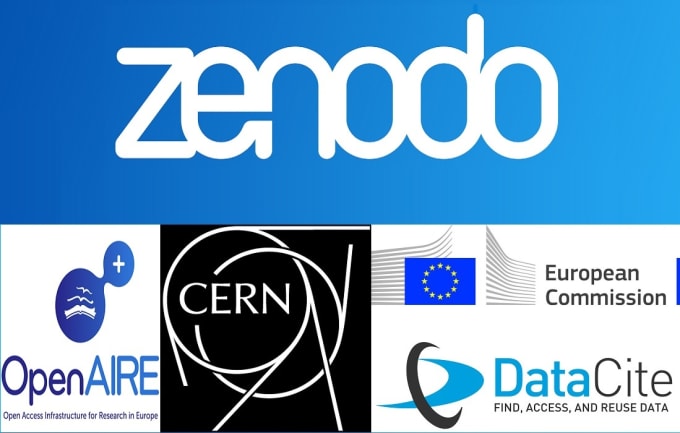Endoscopic and histopathological findings of upper gastrointestinal tract lesions in pediatric age group
Pediatric upper gastrointestinal tract lesions
DOI:
https://doi.org/10.5281/zenodo.10891249Keywords:
Children, endoscopy, gastrointestinal system, biopsyAbstract
Objective: Upper gastrointestinal (GI) tract endoscopy is a diagnostic procedure utilized to identify pathologies within this region, establish treatment plans, and determine prognoses. This procedure, commonly employed in adults, is now considered safe for use in pediatric patients. The objective of this study was to conduct a retrospective analysis of the results obtained from upper GI endoscopies performed on pediatric patients at a single center.
Methods: During the period between September 2017 and March 2020, we conducted an assessment on a total of 488 patients who were aged between 5 months and 17 years and who underwent upper GI endoscopy and biopsy at the Pediatric Gastroenterology Department of X Hospital.
Results: Over a period of 30 months, a total of 488 pediatric patients underwent upper GI endoscopy procedures, during which biopsies were obtained. The most common complaints reported were abdominal pain and retrosternal burning/bitter water in the mouth. The most frequently observed lesions during the endoscopy procedure were gastritis, duodenitis, and ulcer. Analysis of biopsy specimens revealed that chronic gastritis was the most common lesion found in the stomach, while chronic duodenitis and esophagitis were the most common lesions detected in the duodenum and esophagus, respectively. Helicobacter pylori infection was identified in 195 cases, with ulcers testing positive for H. pylori in 39.1% of these cases. The ulcers resolved after undergoing eradication treatment. Intestinal metaplasia was observed in eight patients, while gastric atrophy was found in three. Sixty-four patients were diagnosed with celiac disease, and as a result, a gluten-free diet was initiated. Additionally, Barret esophagus was detected in four patients.
Conclusion: Endoscopic procedures are becoming increasingly significant in diagnosing pediatric patients due to their ease of use under appropriate sedation and low incidence of complications. These procedures are crucial in ensuring accurate diagnosis and avoiding unnecessary treatment for children
Downloads
References
Liu C, Crawford JM. The Gastrointestinal Tract. In: Kumar V, Abbas AK, Fausto N, editors. Robbins and Cotran Pathologic Basis of Disease. 7th ed. Elsevier Saunders 2005; p. 797-875.
Sökücü S, Saner G, Durmaz Ö. Sindirim Sistemi ve hastalıkları. In: Neyzi O, Ertuğrul T, editors. Pediyatri. 4.baskı. Nobel Tıp Kitapevi 2010; s. 895-1025.
Lyons H, Zhang Y, Szpunar S, Dharmaraj R. Predictors of positive esophagogastroduodenoscopy outcomes in children and adolescents: a single center experience. BMC Res Notes. 2017;10(1):356.
Franciosi JP, Fiorino K, Ruchelli E et al. Changing indications for upper endoscopy in children during a 20-year period. J Pediatr Gastroenterol Nutr 2010;51:443-447.
Schluckebier D, Afzal NA, Thomson M. Therapeutic Upper Gastrointestinal Endoscopy in Pediatric Gastroenterology. Front Pediatr. 2022 Feb 25;9:715912. doi: 10.3389/fped.2021.715912. PMID: 35280448; PMCID: PMC8913901.
Dixon MF, Genta RM, Yardley JH, Gorrea P. Classification and grading of gastritis. The updated Sydney system. Am J Surg Pathol 1996;20:1161–81.
Oberhuber G, Granditsch G, Vogelsang H. The histopathology of coeliac disease: time for a standardised report scheme for pathologists. Eur J Gastroenterol Hepatol 1999; 11: 1185-1194.
Alatise, O.I., Anyabolu, H.C., Sowande, O. and Akinola, D. (2015) Paediatric Endoscopy by Adult Gastroenterologists in Ile-Ife, Nigeria: A Viable Option to Increase the Access to Paediatric Endoscopy in Low Resource Countries. African Journal of Paediatric Surgery. 2015.12, 261-265.
Mudawi, H.M., El Tahir, M.A., Suleiman, S.H., Eltaybe, N.H., Gamer, N.M., Abdallha, F.A.and Ibrahim, S.Z. (2009) Pediatric Gastrointestinal Endoscopy: Experience in a Sudanese University Hospital. Eastern Mediterranean Health Journal , 15, 1027-1031.
Moreno Estrada T, Fernández Mejia MR, Losada G CL, Niño-Serna LF. [Upper gastrointestinal endoscopy in pediatrics: experience of a high complexity center in Latin-America]. Andes Pediatrica : Revista Chilena de Pediatria. 2023 Apr;94(2):153-160. DOI: 10.32641/andespediatr.v94i2.4464. PMID: 37358108.
[9] Kawami, E., Machado, R.S., Fonseka, J.R., et al . (2004) Clinical and Histological Features of Duodenal Ulcer in Children and Adolescents. Journal of Pediatrics , 80, 321-325.
El-Mouzan, M.I., Al-Mofleh, I.A., Abdallah, A.M. and Al-Rashed, R.S. (2004) Indications and Yield of Upper Gastrointestinal Endoscopy in Children. Saudi Medical Journal , 25, 1223-1225.
Memon IA, Lal M, Tariq S, Chand S. Upper Gastrointestinal Endoscopic Experience in Children. Medical Channel 2011;17(4): 30-33
Volonaki E, Sebire NJ, Borelli O, et al. Gastrointestinalendoscopy and mucosal biopsy in the first year of life; indications and outcome. J Pediatr Gastroenterol Nutr. 2012;55:62-5.
Shin WJ, Shin JW, Ahn YH, et al. A clinical evaluation of the eosophagogastroduodenoscopy studies in infants and early children. Korean J Pediatr. 1996;39:1280-7.
Sheiko MA, Feinstein JA, Capocelli KE, Kramer RE. The concordance of endoscopic and histologic findings of 1000 pediatric EGDs. Gastrointest Endosc. 2015;81:1385-91.
Solakoğlu KD, Diniz, G, Baran M. Pediatrik gastrointestinal sistem endoskopik biyopsi bulgularının değerlendirilmesi. İzmir Tepecik Eğitim Hastanesi Dergisi. 2018; 28:3, 169-174.
Kori M, Gladish V, Ziv-Sokolovskaya N, Huszar M, Beer- Gabel M, Reifen R. The significance of routine duodenal biopsies in pediatric patients undergoing upper intestinal endoscopy. J Clin Gastroenterol. 2003;37:39-41.
Toufiki, S. and Sbihi, M. (2008) Apport de la fibroscopie digestive haute chez l’enfant. 273 These de medecine .Faculté de médecine de pharmacie de Marrakech Thèse No. 24.
Megraud, F. (1998) Epidemiology and Mechanism of Antibiotic Resistance in Helicobacter pylori . Gastroenterology , 115, 1278-1282.
Rosu, O.-M.; Gimiga, N.; Stefanescu, G.; Anton, C.; Paduraru, G.; Tataranu, E.; Balan, G.G.; Diaconescu, S. Helicobacter pylori Infection in a Pediatric Population from Romania: Risk Factors, Clinical and Endoscopic Features and Treatment Compliance. J. Clin. Med. 2022, 11, 2432. https://doi.org/10.3390/jcm11092432
Tosun Yıldırım H, Diniz G, Ecevit Ç, Aktaş S. Pediatrik gastrointestinal sistem hastalıklarına patolojik yaklaşım. Behçet Uz Çocuk Hast Derg. 2015;5(1):1-9.
Honar N, Minazadeh A, Shakibazad N, Haghighat M, Saki F, Javaherizadeh H. Diagnostic accuracy of urea breath test for Helicobacter pylori infection in children with dyspepsia in comparison to histopathology. Arq Gastroenterol 2016; 53(2): 108-112.
Stefanolo JP, Zingone F, Gizzi C, Marsilio I, Espinet ML, Smecuol EG, Khaouli M, Moreno ML, Pinto-Sánchez MI, Niveloni SI, Verdú EF, Ciacci C, Bai JC. Upper gastrointestinal endoscopic findings in celiac disease at diagnosis: A multicenter international retrospective study. World J Gastroenterol. 2022 Nov 21;28(43):6157-6167. doi: 10.3748/wjg.v28.i43.6157. PMID: 36483156; PMCID: PMC9724482.
Sood A, Midha V, Sood N, Avasthi G, Sehgal A. Prevalence of celiac disease among school children in Punjab, North India. J Gastroenterol Hepatol 2006;21(10):1622-5.
Uğraş, M., & Alan, S. Çocuklara Yapılan Üst Gastrointestinal Sistem Endoskopilerinin Sonuçlarının Değerlendirilmesi. FÜ Sağlık Bilimleri Tıp Dergisi. 2012; 26(1), 31-34.
Liacouras CA. The Digestive System. In Kliegman RM, Stanton BF, St. Geme JW, Schor NF, Behrman RE, editors. Nelson Textbook of Pediatrics. 19th ed. Elsevier Saunders 2011; p. 1240-1362.
Akbulut, UE, Sağ E, Çakır M. Özofagogastroduodenoskopi Yapılmış Çocuklarda Özofagus Patolojilerinin Değerlendirilmesi. Türkiye Çocuk Hastalıkları Dergisi. 2017; 11:1, 9-14.
Lightdale JR, Gremse DA; Section on Gastroenterology, Hepatology, and Nutrition. Gastroesophageal reflux: Management guidance for the pediatrician. Pediatrics 2013;131:1684-95.
Issaivanan M, Redner A, Weinstein T, Soffer S, Glassman L, Edelman M, Levy CF. Esophageal carcinoma in children and adolescents. J Pediatr Hematol Oncol 2012;34(1):63-7. http://dx.doi.org/10.1097/MPH.0b013e31822814b2.
Nguyen DM, El-Serag HB, Shub M, Integlia M, Henderson L, Richardson P, Fairly K, Gilger MA. Barretts esophagus in children and adolescents without neurodevelopmental or tracheoesophageal abnormalities: a prospective study. Gastrointest Endosc 2011;73(5):875-80.
Thakkar, K., El Serag, H.B., Mattek, N. and Gilger, M.A. (2007) Complications of Pediatric EGD: A 4-Year Experience in PEDS-CORI. Gastrointestinal Endoscopy , 65, 213-221.
Downloads
Published
How to Cite
Issue
Section
License
Copyright (c) 2024 Chronicles of Precision Medical Researchers

This work is licensed under a Creative Commons Attribution-NonCommercial-ShareAlike 4.0 International License.





